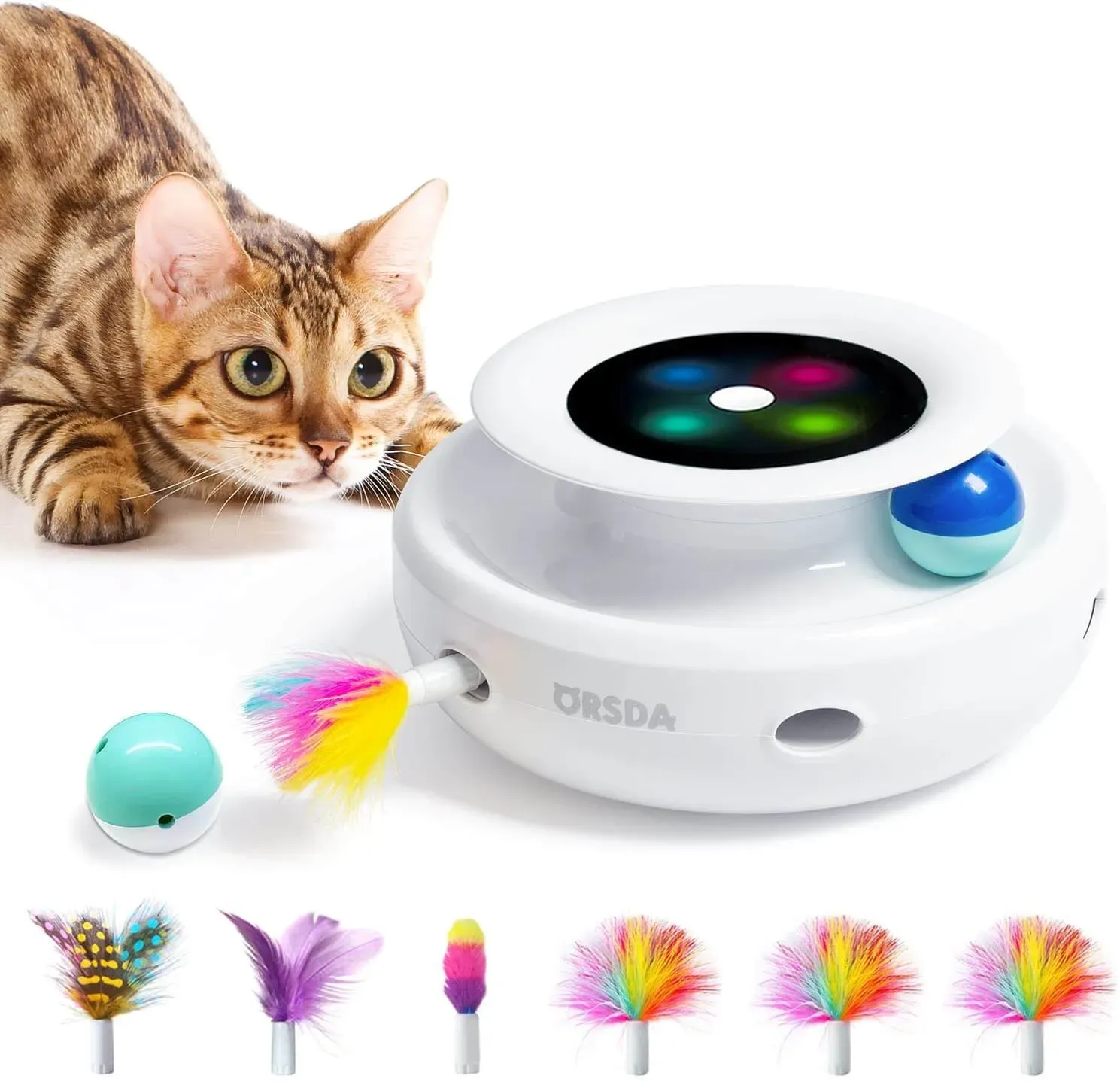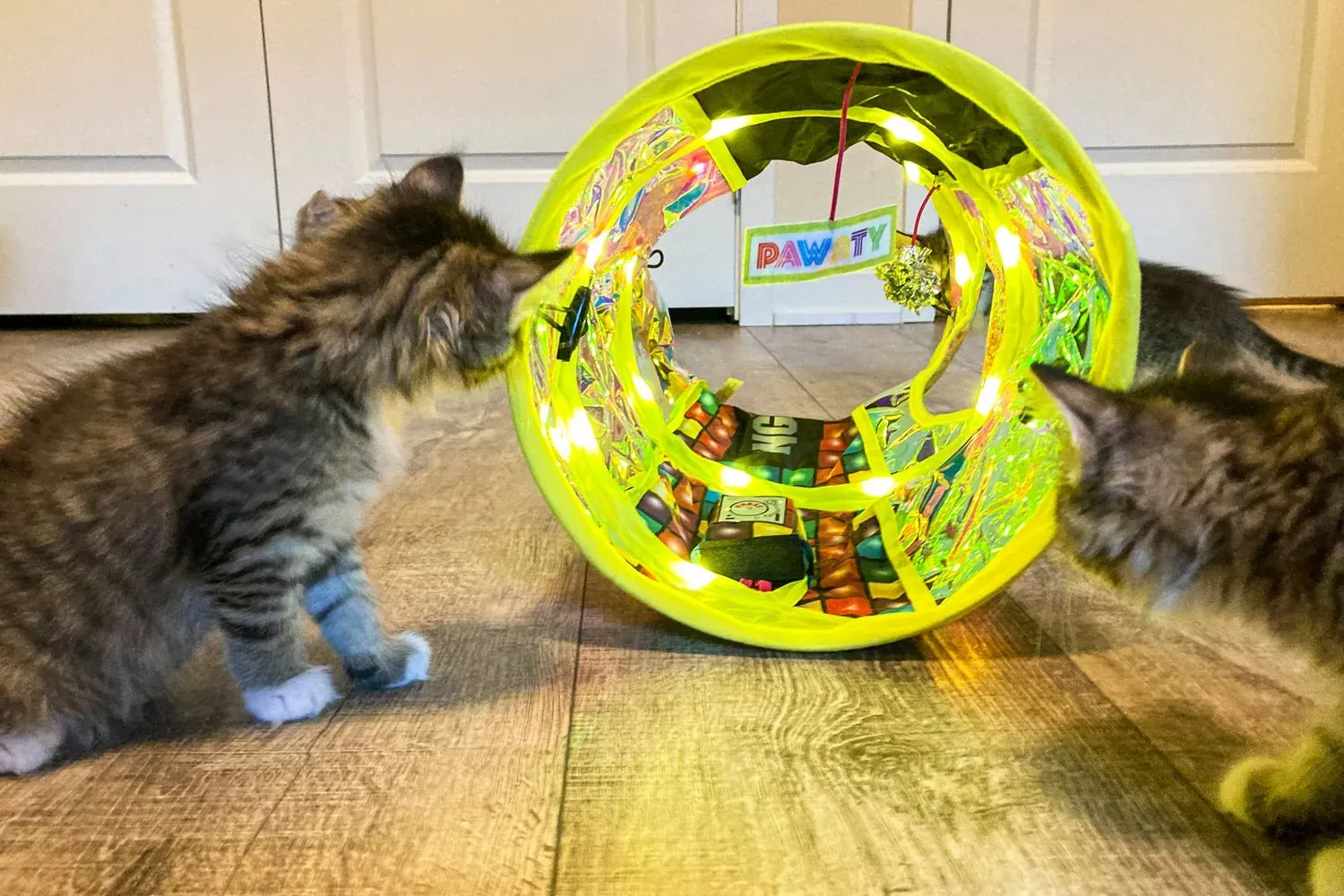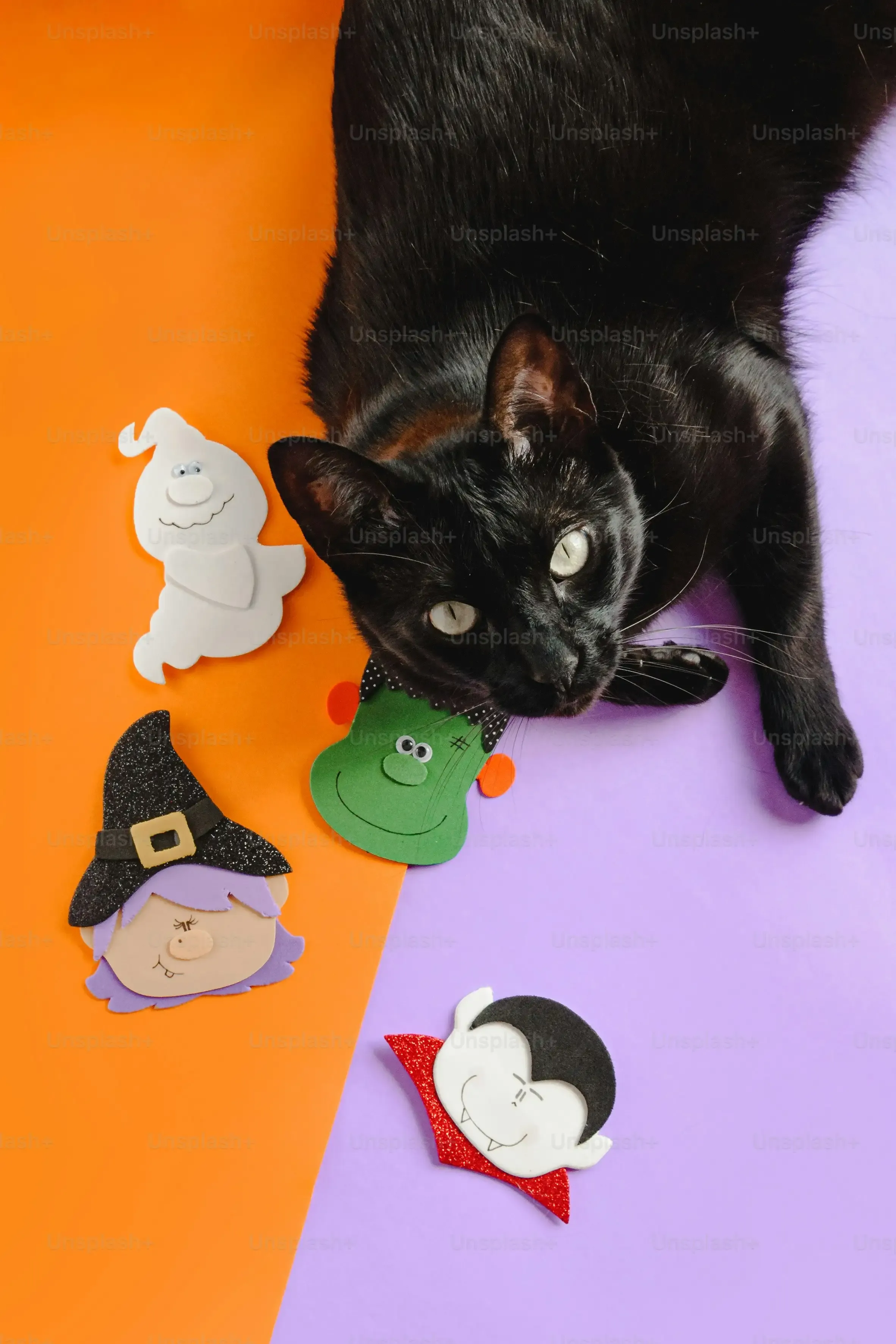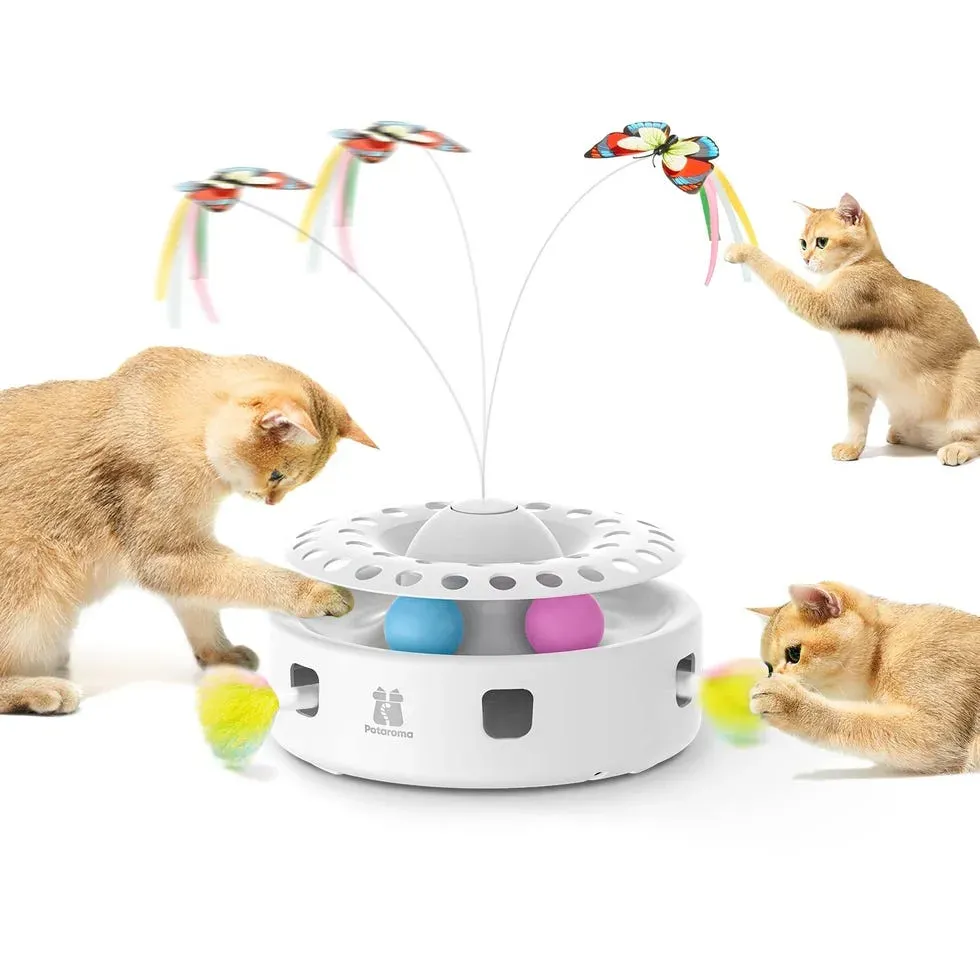Table of Contents
Is your cat treating your favorite rug like a personal obstacle course? Does their default state seem to be alternating between deep sleep and mild existential dread? Welcome to the life of an indoor cat parent. These domesticated predators, while experts in napping, still possess the hardwired instincts of hunters. Without an outlet, that energy can manifest in ways you might not appreciate, like scaling your curtains or staging elaborate ambushes from under the bed.
Why Your Cat Needs Top Rated Interactive Cat Toys

Why Your Cat Needs Top Rated Interactive Cat Toys
Channeling the Inner Predator (Without the Mess)
Let's be real. Your adorable, purring furball is, genetically speaking, still a tiny tiger. They're hardwired to hunt, stalk, and pounce. In the wild, this is how they survive. In your living room, this instinct doesn't just vanish because you provide kibble on demand. Without appropriate outlets, that pent-up energy and hunting drive can turn into behaviors you'd rather avoid – like attacking your ankles at 3 AM or systematically shredding the corner of the sofa you just replaced. **Why Your Cat Needs Top Rated Interactive Cat Toys** boils down to providing a safe, stimulating way for them to express these natural instincts. It's not just about keeping them busy; it's about fulfilling a fundamental biological need.
More Than Just Fun: The Health Benefits
Beyond saving your furniture, engaging with **top rated interactive cat toys** offers significant health advantages. Physical play is crucial for maintaining a healthy weight, especially for indoor cats who might otherwise lead a pretty sedentary life. Obesity in cats is a real problem, leading to diabetes, joint issues, and a shorter lifespan. These toys encourage movement, agility, and cardiovascular activity. Plus, the mental stimulation involved in figuring out a puzzle toy or tracking a moving lure helps keep their brains sharp, reducing boredom and potentially preventing behavioral problems linked to stress and anxiety. Think of it as exercise class and brain games rolled into one, mandatory for their well-being.
Here's a quick look at what interactive play tackles:
- Combats boredom and inactivity.
- Reduces stress and anxiety-related behaviors (like excessive grooming or aggression).
- Helps maintain a healthy weight and muscle tone.
- Sharpens cognitive function and problem-solving skills.
- Strengthens the bond between you and your cat through shared activity.
Decoding the Appeal: What Makes Interactive Cat Toys So Effective?

Decoding the Appeal: What Makes Interactive Cat Toys So Effective?
The Psychology of the Pounce
So, why do cats lose their minds over a laser dot or spend twenty minutes batting a treat ball? It's all about tapping into that primal hunting sequence: spot, stalk, chase, and capture. **Decoding the Appeal: What Makes Interactive Cat Toys So Effective?** really boils down to their ability to mimic unpredictable prey movement. A static toy is boring because it doesn't run away. An interactive toy, whether it's a wand toy you're operating, a self-moving ball, or a puzzle dispensing treats, provides that crucial element of challenge and unpredictability. It engages their minds as much as their bodies, requiring them to strategize, anticipate, and problem-solve, just like they would if they were hunting a mouse in the wild (or, you know, a dust bunny under the sofa).
From Lasers to Lures: Types of Top Rated Interactive Cat Toys
The Arsenal of Engagement
Alright, so you're sold on the "why." Now, what does the landscape of **top rated interactive cat toys** actually look like? It's more than just a string on a stick (though a good string on a stick is underrated, honestly). We're talking about gear designed to trigger specific hunting behaviors. There are the classic wand toys, where you're the puppet master, mimicking erratic bird or mouse movements. Then you've got the laser pointers – the eternal debate topic – universally captivating but requiring careful use to avoid frustration. Puzzle feeders make them work for their supper, turning mealtime into a mental workout. Automated toys, from self-rolling balls to electronic critters popping out of holes, offer stimulation when you're busy. Each type taps into a different facet of their predatory nature, offering variety is key to keeping things fresh.
Picking the Perfect Plaything: Matching Toys to Your Cat's Persona

Picking the Perfect Plaything: Matching Toys to Your Cat's Persona
Observe Your Feline's Play Style
Alright, you've grasped why these toys matter. Now comes the slightly tricky part: figuring out which **top rated interactive cat toys** your specific furball will actually engage with. It's not a one-size-fits-all situation. Think about it – you wouldn't give a marathon runner a chessboard and expect them to be thrilled, right? Cats have personalities, preferences, and ingrained hunting styles. Before you drop cash on the latest gadget promising guaranteed purrs, take a week to just watch your cat. How do they play when left to their own devices? Are they ambush predators, hiding under chairs and launching surprise attacks? Do they prefer to stalk and chase, fixating on a moth or a dust bunny across the room? Are they more into batting things around with their paws, like a tiny hockey player? Do they seem more interested in figuring things out, like how to get into that cabinet?
Paying attention to these natural tendencies is your secret weapon. It tells you whether they're primarily motivated by movement, sound, puzzle-solving, or tactile interaction. A cat who loves batting things might adore a trackball toy, while a dedicated stalker will probably go nuts for a wand toy that mimics a bird.
Matching Toys to Their Inner Hunter
Once you've played amateur cat behaviorist, you can start matching toys to their inherent "persona." If your cat is a dedicated Pouncer, obsessed with surprise attacks from behind furniture, toys that pop out or move erratically are ideal. Think automated peek-a-boo toys or even a simple crinkle tunnel you can rustle. For the Stalker, who locks onto targets from across the room and executes a deliberate chase, laser pointers (used responsibly, remember!) or fast-moving remote-control toys can satisfy that drive. Puzzle feeders and treat balls are perfect for The Thinker, the cat who enjoys a mental challenge and working for their reward. Even the seemingly lazy Lounger can often be enticed with toys that require minimal effort initially but offer a big payoff, like catnip-filled plushies or slow-moving electronic lures. Don't be afraid to experiment; sometimes the most unexpected toy becomes their absolute favorite.
Here’s a cheat sheet for matching toys to typical cat play styles:
- The Pouncer: Toys that hide and pop out (peek-a-boo boxes), crinkle toys, tunnels.
- The Stalker/Chaser: Wand toys with feathers or lures, laser pointers (use cautiously!), remote control mice/cars.
- The Battler: Trackball toys, springs, small plush mice, crinkle balls.
- The Thinker: Puzzle feeders, treat balls, interactive boards requiring paw manipulation.
- The Climber/Acrobat: Cat trees, wall-mounted perches, dangling toys (ensure safety).
Keeping the Thrill Alive: Maximizing Playtime with Interactive Toys

Keeping the Thrill Alive: Maximizing Playtime with Interactive Toys
Rotate Your Arsenal
So, you've invested in some **top rated interactive cat toys**, watched your cat go bonkers for them, and enjoyed the peace and quiet that comes with an entertained feline. Great! But here's the catch: cats are smart, and the novelty wears off. If you leave every single toy out all the time, they become part of the furniture, losing their appeal. Think of it like giving a kid every Christmas present on Christmas morning versus spreading them out. The excitement diminishes quickly. To avoid this, you need a toy rotation strategy.
Don't just leave the same three toys lying around. Have a selection, maybe five to ten interactive toys, and only put out two or three at a time. Swap them out every few days or even weekly. When you reintroduce a toy they haven't seen in a while, it feels new and exciting again, triggering that hunting curiosity. This simple practice keeps their interest piqued and ensures your investment in those **top rated interactive cat toys** continues to pay off long-term. It's less about buying *more* toys and more about managing the ones you have effectively.
Schedule the Hunt
Just like in the wild, hunting isn't a 24/7 free-for-all. Cats have peak activity times, often around dawn and dusk. Scheduling interactive play sessions to coincide with these natural bursts of energy can significantly increase engagement. A quick 15-20 minute session before you head to work or in the evening before dinner can make a huge difference. It provides a structured outlet for their hunting drive when they're most inclined to use it.
Consistency is also key. Try to make interactive playtime a regular part of your routine. Your cat will come to anticipate it, and it strengthens your bond. Remember to mimic the hunt – let them stalk, chase, and most importantly, *capture* the toy at the end of the session. Ending with a successful "kill" (like catching the wand toy lure) provides a sense of accomplishment that static toys can't replicate. Follow the play session with a small meal or treat to simulate the natural hunt-eat cycle. This reinforces the positive association with playtime.
Tips for Maximizing Playtime:
- Rotate Toys: Keep only a few out at a time and swap them regularly.
- Schedule Sessions: Play during your cat's natural peak activity times (dawn/dusk).
- Mimic the Hunt: Include stalking, chasing, and a final "capture."
- End with Success: Always let them catch the toy at the end.
- Follow with Food: A small meal after play reinforces the hunt-eat cycle.
- Be Enthusiastic: Your energy is contagious (to a point, it's still a cat).
Making Playtime Count
Look, nobody's saying a laser pointer is going to solve all of life's problems, feline or otherwise. But investing in some **top rated interactive cat toys** isn't just another expense; it's an investment in your cat's well-being and, let's be honest, your own sanity. A bored cat is a destructive cat, or at least a perpetually annoying one. Finding the toys that tap into their natural instincts – the hunt, the chase, the puzzle – makes a tangible difference. It's about providing stimulation that a static plush mouse just can't replicate. So, put down the generic dollar-store fluff and explore the options that actually hold their attention. Your furniture, and possibly your ankles, will thank you.